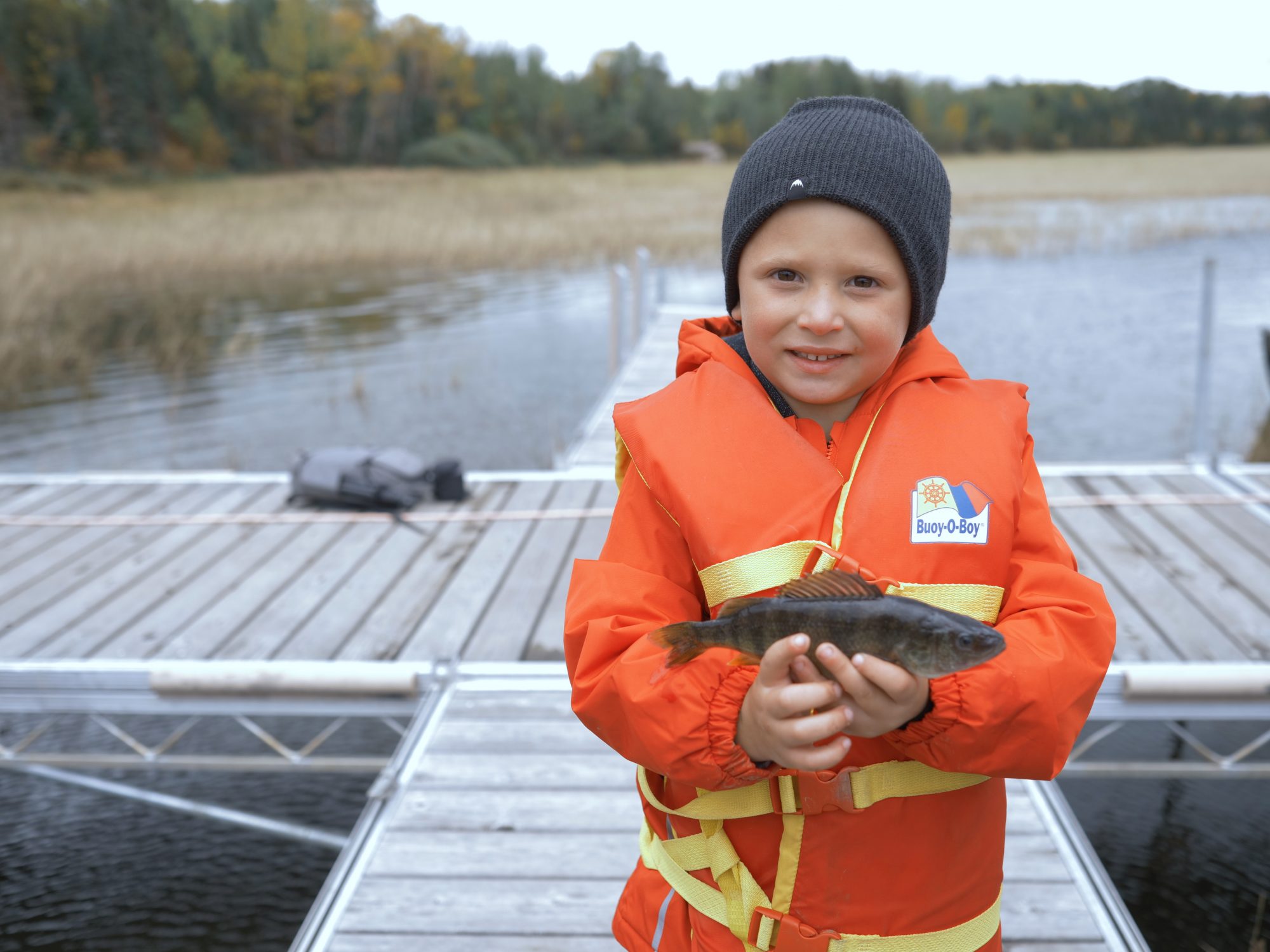
10 Yellow Perch Facts
Back to Superior Country BlogYellow Perch are a fish species native to Ontario and found in abundance through the Great Lakes drainage system. They are a close relative to the Walleye and share may similarities in terms of appearance, feeding habits and habitat needs. They have become a popular sportfish species due to their abundant population. In fact, Whitefish Lake where Ole’s Adventure Resort is located within FMZ 6 maintains a 100 Yellow Perch possession limit per person! Along with Ole’s Adventure Resort, there are plenty other Superior Country Lodges, Outfitters & Resorts to check out for Yellow Perch fishing opportunities!

1. Scientific Name
The Yellow Perch has gained a few nicknames such as Stripies, Ring-Perch, Stripe Perch and even Racoon Perch. However, their scientific name is Perca Flavescens.
2. Lifespan
The Yellow Perch typically lives up to 10-11 years in their natural wild habitat. Referred to be “easy keepers”, they can survive a range of temperatures and water conditions in comparison to a variety of other species.

Related Article: 10 Walleye Facts
3. Size
Yellow Perch are a lot smaller in size to the species they share their waters with. They average out to 6-12 inches in length and weigh less a pound! Typically 0.75lbs. A newly hatched Perch is only about 5mm long, they are independent from the moment they hatch and receive no parental guidance. Males mature around 2-3 years of age while females mature later at 3-4 years of age. Once matured, the females do grow larger than males and at a faster rate.
4. Yellow Perch Spawning
Spawning occurs in areas of shallow water, usually under 5 meters. They are not the greatest swimmers so they stay away from heavy current, when spawning however, they do enjoy a little current. Yellow Perch spawn in schools in moderately vegetated areas come April / May. The average female produces 23,000 eggs! The eggs bound to the vegetation for the incubation period and are kept in company by the male fish. Females will leave the eggs as soon as she lays them, while the males to stick around a little longer they do not show protective actions towards the laid eggs. Afterwards, they eggs will hatch within 10-21 days.

5. Habitat
Consider Yellow Perch are relatively weak swimmers (unable to swim in fast currents) and so are found in warm/cool lakes and large ponds. They do also inhabit rivers, giving that the river does not have too much current. Yellow Perch naturally reside in schools and are found in an abundant of man-made lakes, river impoundments and reservoirs. Yellow Perch tend to inhabit shallow areas with structural protection such as aquatic weeds, floating docks and shoals. Yellow Perch prefer waterbodies with muck, sand, or gravel bottoms and are less abundant in clear, deep unproductive lakes.
6. Diet
The diet of Yellow Perch mainly consists of aquatic invertebrates, which includes snails, worms, leeches etc. Their diet also consists of larvae, crayfish, other fish species eggs and other juvenile fish species. At dusk is when they consume the largest amount of food throughout the day, this makes for a good “night-bite” when fishing for Perch.

7. Common Baits / Lures
As previously mentioned, they feed at dusk, when targeting Perch one should head out for a “night-bite” to reel in large amount. Also mentioned, they live in schools, once you catch one you’re sure to know more are nearby. Some of the most common baits and lures to use while fishing include small spinners, jigs with twister tails or flies. Baiting with small minnows, worms and even insects is a common trick of the trade.
8. Appearance
Walleye and Yellow Perch have a lot in common when it comes to appearance. They share the double dorsal fin characteristic and large mouth that extends back to below the eye. In difference, Perch are known for their dark, mere black stripes on their sides over their light yellow body. The stripes come down from their back and sometimes reach as far down as their belly.

9. Yellow Perch Schooling Habit
Although Yellow Perch do display schooling behavior, their schooling habits change as they age. Young juvenile’s will gather in schools of 50 to 200 fish. Adult, larger Perch will travel alone or in schools of other adult Perch. They separate themselves from juveniles once they hit maturing age. Interestingly, young Perch will also have special arrangements in their fish schools. Studies have shown that smaller Perch will be on the interior of the school while the larger ones will line the outsides of the school. It has been concluded that the reason for the arrangement could be to protect the smaller, less vulnerable ones. The larger ones on the outside will also get better feeding opportunities. Seems to be quite systematic!
10. Ontario Record
The current Ontario Record for Yellow Perch is 2.4lbs! It may not sound like much, however, for a Perch it is quite large.


 Walleye
Walleye Northern Pike
Northern Pike Lake Trout
Lake Trout Brook Trout
Brook Trout Steelhead
Steelhead Salmon
Salmon Smallmouth Bass
Smallmouth Bass Perch
Perch Superior Picnics
Superior Picnics